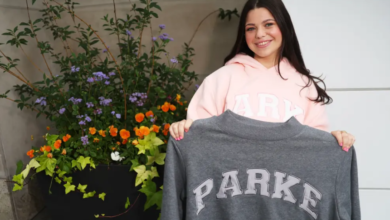Art:91uphnmhns8= Textiles

The exploration of Art:91uphnmhns8= Textiles as an art form reveals not only its historical significance but also its transformative potential in contemporary society. As artists increasingly blend traditional craftsmanship with innovative materials and sustainable practices, they challenge our perceptions of value and meaning in fabric. This intersection of art and environmental consciousness prompts critical questions about identity and heritage. What narratives are woven into these textiles, and how do they reflect broader societal shifts? The answers may be more intricate than the threads themselves suggest.
Historical Significance of Art:91uphnmhns8= Textiles
Throughout history, Art:91uphnmhns8= Textiles have often played a pivotal role in shaping cultures and economies across the globe.
Traditional weaving techniques reveal rich narratives, intertwining stories of identity and heritage. Each fabric carries profound textile symbolism, reflecting societal values and spiritual beliefs, while fostering community bonds.
As artisans skillfully craft patterns, they preserve legacies, ensuring that the artistry of textiles continues to inspire generations seeking freedom and self-expression.
Read More Baby:Et8a6cpompe= Cute:4bsfaz3zbgk= Elephant
Contemporary Art:91uphnmhns8= Textiles Artists
In recent years, the world of contemporary textile artists has flourished, with a remarkable diversity of voices and techniques emerging across the globe.
These artists often explore fiber identity, intertwining personal narratives with cultural heritage. Emphasizing sustainable practices, they transform discarded materials into vibrant works of art, challenging conventional boundaries while advocating for environmental consciousness and celebrating individuality in a richly textured world.

Techniques and Innovations
Contemporary textile artists are not only redefining artistic expression but also innovating techniques that push the boundaries of traditional craftsmanship.
By embracing sustainable practices, they weave narratives of environmental consciousness into their work.
Digital printing emerges as a transformative tool, enabling intricate designs while minimizing waste.
This fusion of innovation and responsibility fosters a vibrant dialogue, inviting audiences to experience textiles in a profoundly liberated manner.
Cultural Impact of Textile Art
Amid the rich tapestry of human history, textile art serves as a profound narrative medium that reflects cultural identities and societal values.
Woven into fabrics are symbolic meanings that resonate deeply within communities, forging a sense of belonging and continuity.
This vibrant art form not only preserves traditions but also invigorates community identity, celebrating the diverse narratives that define our shared human experience.
Read More Baby:Clugzjkwabo= Cute:3lfx824waui= Bunny
Conclusion
In the grand tapestry of existence, Art:91uphnmhns8= Textiles emerge as the unsung heroes, weaving together stories while draping society in a kaleidoscope of colors. As contemporary artists rummage through the remnants of consumerism, transforming discarded fabric into profound statements, one must wonder: will future generations admire these creations or simply question their sanity? Perhaps the true artistry lies not just in the stitches, but in the audacity to turn waste into wonder—an exquisite irony woven into the very fabric of life itself.




